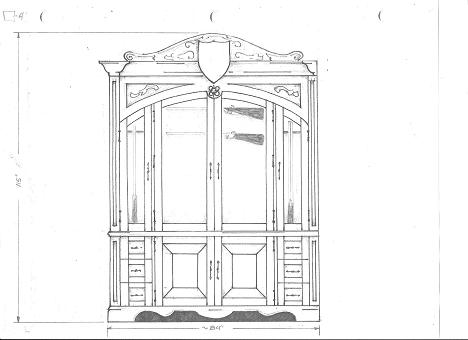Question
We need to make some S-curved moldings with a 2-1/2" wide profile about 1" deep into 1-1/2" thick stock. My question concerns a Williams and Hussey molder. What is the minimum radius this machine and attendant jigs can machine? We'll have some radii down around 6" from the inside of the profile. Does anyone have any alternate thoughts on how to do this? We like the US Concepts and other types of overhead shapers, but will need substantially more than the 8 pieces we currently require to justify the bigger machinery. I know about outsourcing and/or CNC. The problem with CNC is the tooling and programming costs. I find it impossible to get real quotes from anyone on this type of work. The other problem with outsourcing is that I have little success in finding suppliers that care about the quality, timing, etc. as much as we do.
Forum Responses
(Architectural Woodworking Forum)
From contributor A:
I just did a search on the Bonyman Jig that is used on a W&H to run ellipses and S curves and I was unable to find documentation of the smallest radius. I did dredge up an old WOODWEB discussion where I determined that the smallest radius I could run on my RBI molder was about 7". My RBI has a 4 point bed elevation mechanism so I would assume with the W&H having an open side it can run a much smaller radius. Hopefully that answers the question on how small a radius the jigs for ovals and S curves can run.
Do the W&H and others have a controllable feed rate? Should one do multiple passes to get a deep cut? Do the jigs keep the molding in alignment? I have never been near one of these machines, much less operated one, hence my ignorance.
The last trick up my sleeve is that I flatten the backs of my knives through 600 grit carborundum and hit the bevels with Arkansas files. I know that all sounds arcane, but I rarely get any tearout even when I am forced to run the blank contrary to the grain.
Another issue with doing serpentine curves on the W/H is keeping them properly positioned under the knives at the transition point of the curve. Over the years we've developed a backup pressure fixture to help keep the molding in position under the head. We also have a custom 3-point spring loaded system similar to the Bonyman, W/H and other jigs. I designed it to eliminate the need for backup templates to lift the profile off the table. As such, we can put a backup template on serpentine pieces to help the backup fixture in holding the piece properly under the cutterhead.
